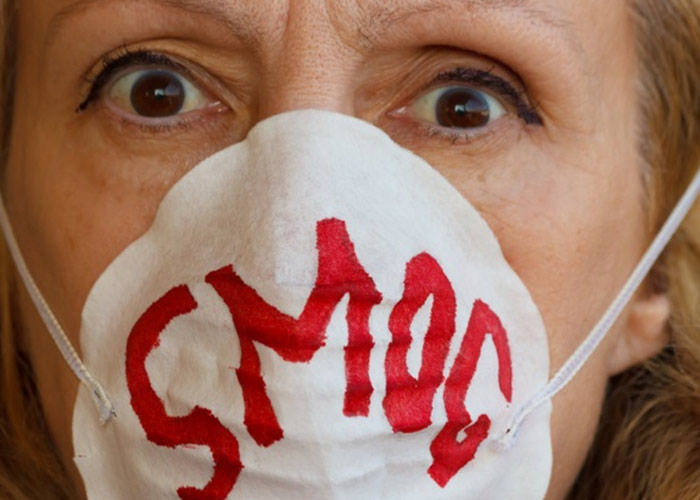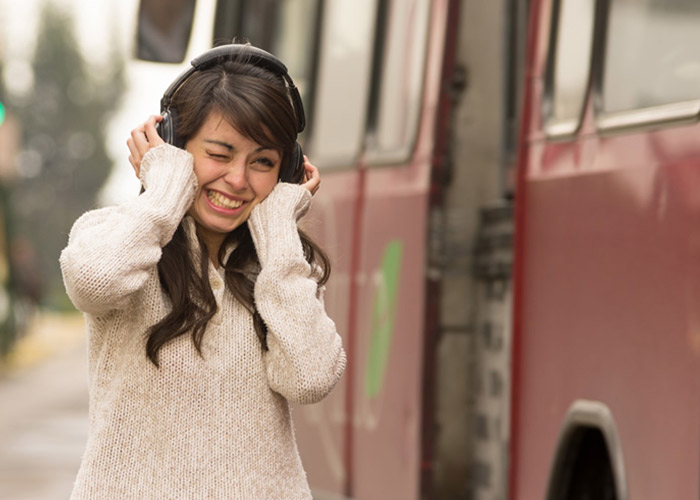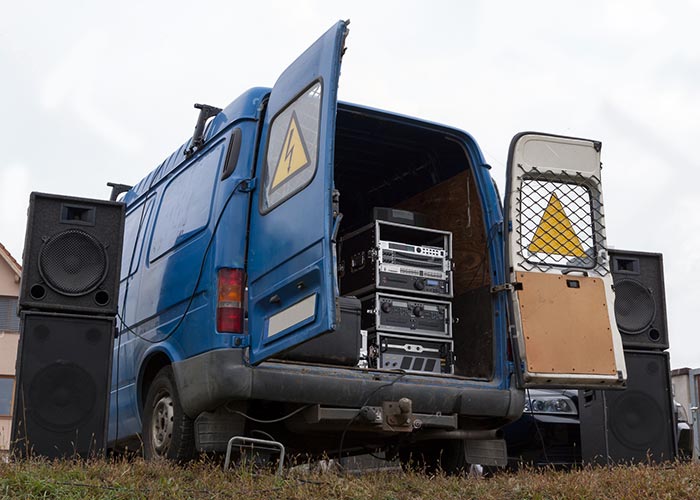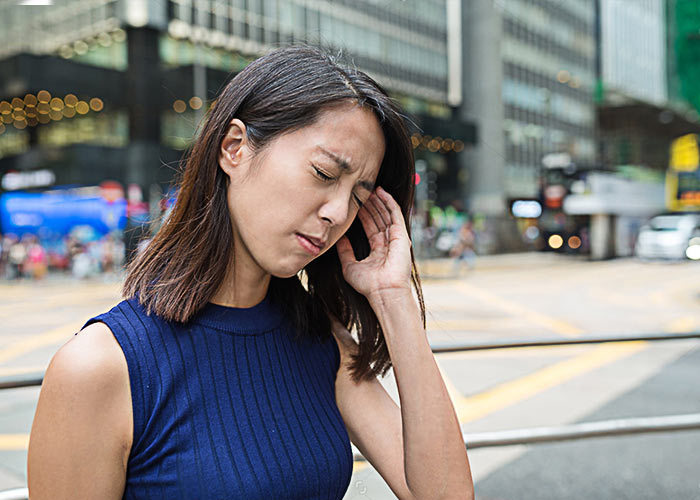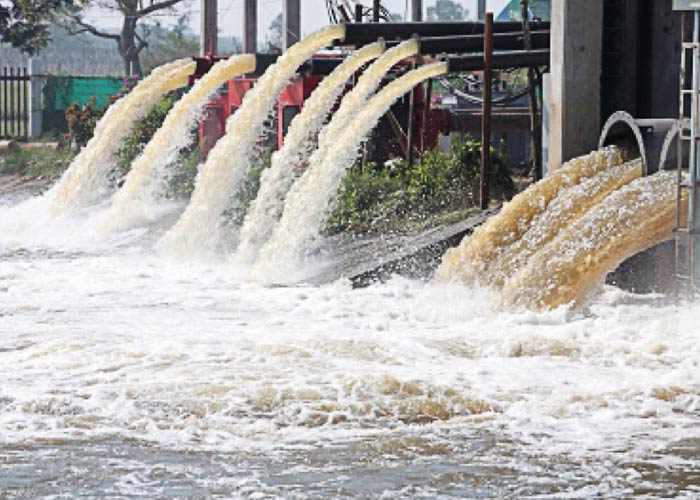When dense smog chocked the National Capital Region in November 2017, there was widespread concern. Even words such as gas chamber for Delhi were used. And it was not wide off the mark. This can be estimated from the fact that the level of PM2.5 in Delhi has gone up from 700 to 900, whereas in general it should be 50 to 100. You can expect what kind of air quality one can have at the level of PM2.5.
Due to the increased level of pollution, people are facing many health problems. Smog can create major health risks, including asthma, lung tissue damage, bronchial infections, heart problems, skin disease, hair-fall, burning in the eye, nose, ear, throat, lung infection, possibility of brain stroke to patients of hypertension and lowering of immune system. There may be general trouble in breathing. Vitamin D production is naturally low due to heavy dust/smog, causing people to have rickets (softening and weakening of the bones).
High levels of ozone can cause problems in our respiratory system. Cases of cough, throat and chest burns are reported at an alarming level. Usually these symptoms go away some time after contact with smog. However, even after the symptoms disappear, the damage to the lungs can persist.
There are many types of questions in common people’s minds, how can the smog be harmful to our health? What is the difference between dust and fog? So, let’s know what smog is.
What is Smog?
Smog is a type of air pollution, which is a mixture of smoke and fog in the air (smoke + fog = smog). Smog is formed when ash, sulphur and other harmful chemicals present in the smoke emitted by factories, vehicles, zoom farming, burning of coal and industrial plants, are exposed to the fog. This leads to many diseases caused by air pollution.
Smog contains a harmful mixture of fog, dust and air pollutants such as nitrogen oxides, sulphur dioxide, volatile organic compounds etc. Together, they make a dense layer of ground-level ozone.
The credit for the use of the word smog for the first time goes to Dr. Henry Antoine Des Voeux during 1905. At the Public Health Congress meeting, reading a letter entitled Fog and Smoke; Dr. Voeux used the word ‘smog’. Significantly, London’s newspaper The Daily Graphic wrote in its July 26, 1905 edition that Dr. Voeux had named the combination of smoke and fog as ‘smog’.
Types of smog
- Sulphur smog
This is produced when there is high amount of sulphur oxide in the air due to the use of sulphur-bearing coal and petroleum substances.
- Photochemical smog
In cities, after emitted by automobiles and other sources, nitrogen oxides and hydrocarbons pass through photochemical reactions in the lower atmosphere. The result is photochemical smog.
- Industrial smog
This gray-air smog is produced from the incomplete combustion of petroleum oil or coal, which contains mercury and sulphur oxide.
Both industrial smog and photochemical smog appear to the eye as yellow-brown haze, but there is considerable difference between the two. Industrial smog is basically found in urban areas where burning of fossil fuels creates smoke and sulphur dioxide that get mixed with fog to create a thick smog. Photochemical smog is formed due to fossil fuels, and the burning of trees and organic waste. These emissions combine in the presence of sunlight to produce nitrogen oxides and volatile organic compounds that create a dense haze. The thickness of these particles is about 2.5 micrometre. Due to their small size, they enter the lungs with respiration and can later damage the heart.
Causes of Smog – Where does smog come from?
These are several factors behind the rising levels of air pollution in the environment. During the winter months when the wind speed decreases, it helps to create a combination of hazardous gases, smoke and fog and it increases pollution levels near the ground. Vehicular smoke, which contains nitrogen oxides and hydrocarbons, turns into colourless ozone gas in the sunlight. Ozone protects us from harmful rays of the sun by forming a protective layer in the upper atmosphere. But if the same ozone starts to form on the surface of the Earth then it becomes very poisonous for us.
Industrial pollution is one of major factors responsible for smog. Winds are a bit sluggish in the winter season. In such a situation, dust particles and pollution stabilizes in the atmosphere, causing conditions of smog. Smog is also due to heavy traffic, high temperatures, sunlight and cold winds.
Delhi is bordered by the states of Punjab, Uttar Pradesh and Haryana which abound in agriculture. People here burn stubbles after harvesting their crops. Apart from this, despite being banned by the Supreme Court, large quantities of firecrackers were burnt in many areas of the capital. They contributed to the formation of smog. Cars, trucks that land on the streets of the capital are also obstacles in the way of clean environment.
Ill-effects of smog
- Cough and cold, burning in throat and chest – When you come in contact with smog, due to the presence of high level ozone in the air, your respiratory system is badly affected. It causes irritation in the chest and cough problems. Ozone also damages your lungs even when its symptoms disappear.
- Triggers asthma – If you are asthmatic, then smog is extremely harmful for you. Asthma attack can occur due to ozone present in smog.
- Difficulty in breathing and deterioration of lungs – Smog aggravates breathing problems, asthma, emphysema, chronic bronchitis and other respiratory problems. Because of this, lung infection can also occur.
How to prevent smog
If there is heavy smog in your city then you can defend yourself with the following methods:
- First of all, you must know the ozone level of your area.
- Venture out of your home when the level of ozone is low.
- Avoid staying outside for long periods of time.
- Reduce the use of cars. Use bus, metro, carpool, and public transport as much as possible.
- To avoid poisonous gases spread in the air, stop moving to a park or open place for exercises, because when you exercise, breathing speed is also faster. In this way, poisonous smog starts reaching your lungs.
- Going to exercise in the park by putting a mask every morning during smog, can also be dangerous for you. It can make you sick rather than fit.
- There is no need to go out of the house to do exercise. Keep doing exercise and yoga at home and avoid outside pollution.
- If the eyes feel irritation, then wash them thoroughly with water. If there is no relief, then see the doctor.
- Cover your face before leaving the house. Use a face mask or handkerchief if you have to go out frequently.
- You can also use the air purifiers in your home.
- Air purifying plants such as Aloe Vera, Ivy and Spider Plant can be kept at home and offices.
- If any kind of construction is happening around the house then let it remain closed for a few days till weather conditions improve.
- Do not burn garbage or leaves at all.
- If the sand or clay soil is stored around the house then pour water there, with this, dust will not fly with air.
- Consumption of foods rich in Vitamin C, magnesium, omega fatty acids, drinking ginger, basil, and pepper tea improve immune system, increasing our ability to fight diseases.
- Cooperate in the fight against air pollution. Adopt initiatives like energy conservation, tree plantation and the use of public transport.
- Wear good quality glasses and masks at the time of getting out of the house.
- Those who are heart and asthma patients should continue to take steam and stay away from cold things.
- Use jaggery and honey in the food as much as possible because jaggery and honey increase immunity in our body.
- Ginger is very beneficial for you if you are frequently catching cold and infections due to pollution. Drinking a spoonful of honey by mixing it in a lukewarm ginger juice three times a day provides great relief to the body.
- If you think that it is beneficial to exercise in the park at the time of morning in smog, better think about some alternative. Smog with sun rays in the morning becomes even more dangerous. It would be better for you to exercise within your home.
- Nowadays, air purifiers are also available in the market to inhale clean air and you can use them if you wish.
- If you are having trouble in breathing then consult a doctor, wash your mouth with hot water after coming from outside.
- Try to stay active during smog days. The more you are active in such weather, the more you are unlikely to have any problem.
- In the winter where air pollution is high, people drink less water. It can prove dangerous. Drink water for up to 4 litres a day. Do not wait to feel thirsty. After a while, continue to drink 1-2 drops of water.
- Drink water while leaving the house. This will ensure the supply of oxygen in the body and the poisonous gases present in the environment, even if they enter bloodstream, will cause less damage.
- The inside of the nose prevents large dust particles present in the air from entering the body. Do not trim hair completely in the name of hygiene.
- Cover your face; air pollution is very harmful for your skin. Therefore, whenever you get out of the house, cover your entire body.
- Clean the mouth, eyes and nose with lukewarm water after you come back from outside. Take steam if possible.
- Asthma and heart patients should take their medicines and inhalers regularly. Always take medicines or inhaler along with you, and do not miss the dose. Otherwise, there is a danger of getting an attack during smog.
- People running bicycles should wear masks. Since they do not wear any helmet, the foul air can easily get into their lungs.
- To avoid the ill-effects of smog, drink basil and ginger tea, turmeric milk, eat oatmeal, include citrus fruits in the diet, increase your immunity with honey, garlic, etc.
- Place some plants around your home that clean the air.
- Gargle before sleeping at night. Doing so gets rid of the dirt trapped in the throat and respiratory track.
- On the advice of the doctor, injections of the flu can also be taken in such an environment.
- Do not burn garbage or leaves and ask others to refrain from doing so. Do not stand long near the burning of waste or polyethylene.
Take particular care of children and the elderly
Immunity of children below 5 years is very low; they run more risk of air pollution. So, do not take them for morning walk in winter, especially at the time of smog. It is very dangerous for children to go out in such weather, so ask them to play indoor games as soon as possible. If children go to school, you can request that children be made to play indoor instead of playing in the field.
Avoid taking children into markets full of dust and heavy traffic. Do not go out with children in a two-wheeler. Keep the mirror locked while taking out the children in car and switch on the AC. Let the kids drink water at regular intervals, because if the body is hydrated, the loss of indoor pollution is also reduced. When the children come back after playing outside, let them clean their mouth well.
The elderly too deserve particular care
Deteriorating air quality can worsen the condition of old people. They should avoid going out, when pollution level is high, and leave home only after there is adequate sunlight. If they are taking medicines for any illness, they should keep taking them regularly. It is not advisable for them to do excessive exercises (brisk walk or jogging, etc) in the winter season, but doing pranayama and yoga will suffice. If they have to go out in the winter then they can go out wearing a good quality mask. They should travel in metro, AC buses or taxis with controlled environment instead of traveling by a two-wheeler or auto.
Conclusion
The effect of smog only ends after a strong wind or rain. The World Health Organization (WHO) has been trying to make countries aware of the long-term consequences of smog on health. Smog contains subtle particles, ozone, nitrogen monoxide and sulphur dioxide which are extremely dangerous for people’s health. In the past years, WHO has repeatedly said that there should be a limit for the emission of these harmful substances? It calls for raising awareness about air pollution and taking proper steps to curb it.
The smoke coming out of the vehicles starts filtering around in the morning. Its victims are people who travel by bus or bike. The government needs to control the smoke emitting from vehicles.

